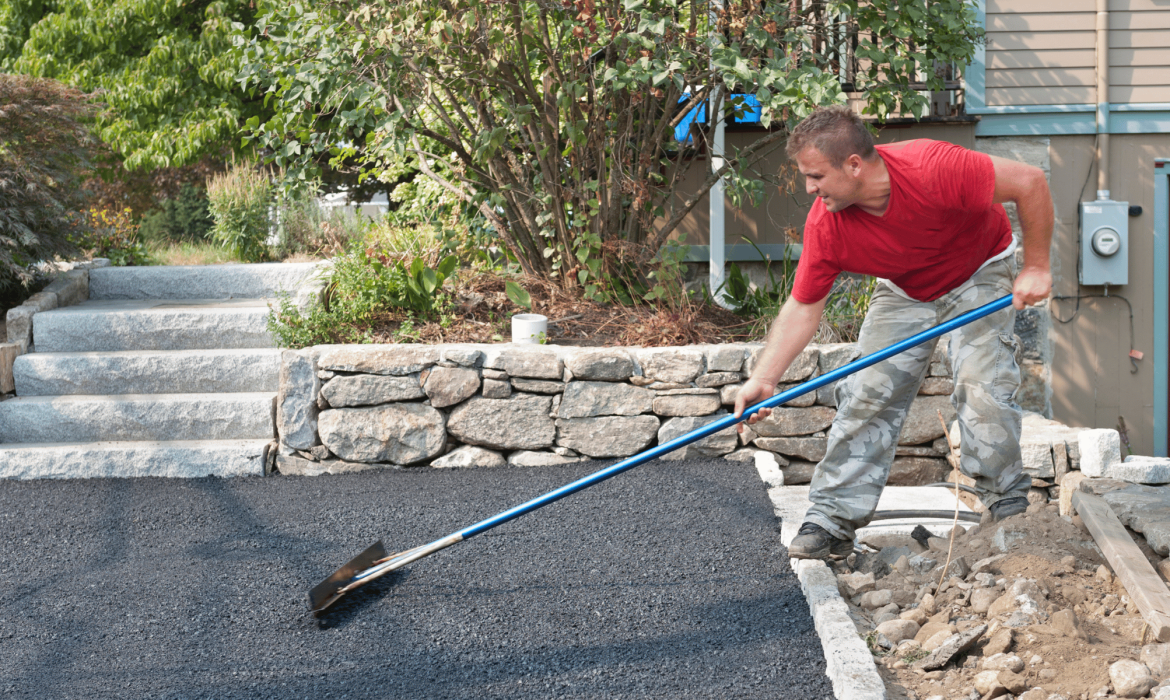Asphalt driveways are widely used due to their low cost, durability as well as clean look. Nonetheless, after some time, even asphalt driveways of the best types may crack because of the weather, wear and tear or improper installation. Small cracks are very easy to repair whereas the bigger ones (more than 1/2 inch wide) need more consideration and the appropriate method.
Here are the steps of repairing large cracks in an asphalt driveway, which are explained one by one.
Why It’s Important to Fix Large Asphalt Cracks
To proceed to the process of repair itself, it is important to know why it is important to repair big cracks:
Stops additional damage: Water may creep in cracks and may freeze in winter and may also make the cracks widen.
Potholes: The cracks that are not attended to may cause potholes, which are more expensive and unsafe.
Enhances appearance: A broken driveway appears to be unattended and may reduce the property price.
Tools and Materials You’ll Need
The following is a list of tools and materials required to do the job:
Tools
- Wire brush or broom
- Leaf blower or shop vacuum
- Chisel and hammer (cleaning edges)
- Caulking gun (where tube filler is used)
- Trowel or putty knife
- Utility knife
- Sealcoat squeegee or brush
Materials
- Asphalt crack filler (when matter involves a large crack, consider asphalt crack filler of rubberized asphalt or asphalt cold-pour crack filler)
- Asphalt patch (not used where there are large gaps)
- Driveway sealer (to be finished with)
- Sand (not compulsory, in case of deep cracks)
Step-by-Step Guide to Repairing Large Cracks in Asphalt Driveway
Step 1: Clean the Crack Thoroughly
- This has to be cleaned carefully first.
- Why? Filler does not stick out because of dirt, debris and loose asphalt.
- Wipe away the crack with a wire brush or broom.
- A leaf blower or shop vacuum can be used to clean the small dust and floating particles.
- In case the crack is jagged, then a chisel and hammer are used to make the crack smooth and slightly bigger. This guarantees the improved adhesion.
Hint: The more the crack is clean, the more the results. Don’t rush this step!
Step 2: Remove Weeds or Grass
In case weeds or grass should have grown up in the crack:
- Pull out by hand or apply weed killer (assuming that you will wait one day prior to filling).
- Do not leave any of the roots attached because they will grow back.
Step 3: Fill Deep Cracks with Sand (Optional)
- The bottom fills in cracks more than 1 inch in depth to within 1/2 inch of the surface.
- This helps in ensuring that the filler does not sink too deep.
- Use play sand or coarse sand.
- Stomp it using a stick or trowel.
Step 4: Apply the Crack Filler
Asphalt fillers are available in two varieties where the cracks are large:
Option 1: Pourable Cold Asphalt Crack Filler
- Available in gallon jugs or caulk tubes.
- Shake well before using.
- Pour it right to the crack, a little.
- A trowel or putty knife is used to work it into the crevice and pressing it in.
Option 2: Rubberized Asphalt Crack Sealer
- Flexible and tougher to use in freeze-thaw regions.
- Frequently a caulking gun is needed.
- Perfect in cracks which swell and shrink as the temperature varies.
- Ensure that instructions are followed to ensure drying and curing is done.
Step 5: Allow Filler to Cure
Curing time varies according to the product, although as a rule:
- Wait 24 or 48 hours prior to walking or driving over it.
- Sealant should not be applied before the crack filler has been completely hardened.
- Test the weather report – do not want it to rain during this time.
Step 6: Driveway Sealer (Strongly suggested)
- Once the crack has been fixed and completely cured, seal the entire drive way to appear homogenous and to provide extra protection.
- Apply asphalt driveway sealer of high quality.
- Rub on using a long-hand squeegee or roller.
- Let it cure for at least 24-48 hours.
- Sealing prevents the UV rays, oil stains and subsequent cracks.
When to Use a Cold Patch Asphalt Repair
In case the crack is more of a small pothole or very broad (more than 1 inch):
- Substitute crack filler with cold patch asphalt.
- Wipe off the surface, pour patch mix in it.
- Using a tamper or some heavy object, stamp it down.
- Allow it to heal as per the prescriptions of the product.
Tips for Best Results
- Dry weather work must have at least 50degF dryness and shake 24+ hours.
- Do not fill the cracks too full, little settlement is to be permitted.
- It is important to check and refill new cracks before they develop.
- One should not load freshly repaired portions with heavy loads before they are completely cured.
When Should You Call a Professional?
Though the majority of large cracks can be repaired by an amateur, it is advisable to call professional help in case:
- The crack is all across the driveway.
- You observe drainage or sinking problems.
- It is crumbling or alligator-like (divisions resembling a web) on the surface.
- It is possible to have a professional asphalt contractor determine if a resurface is required or a replacement.

